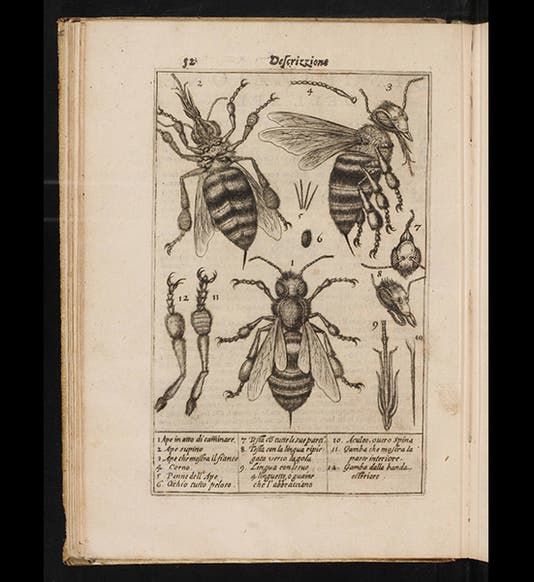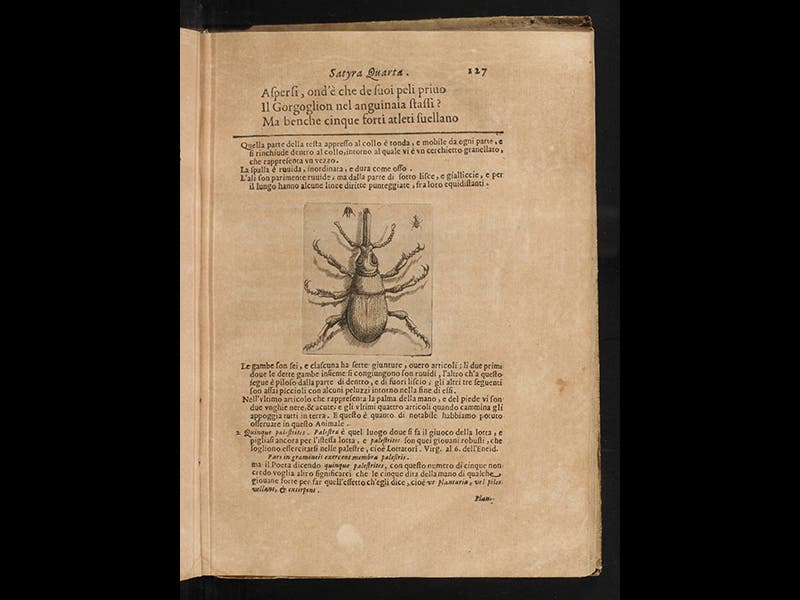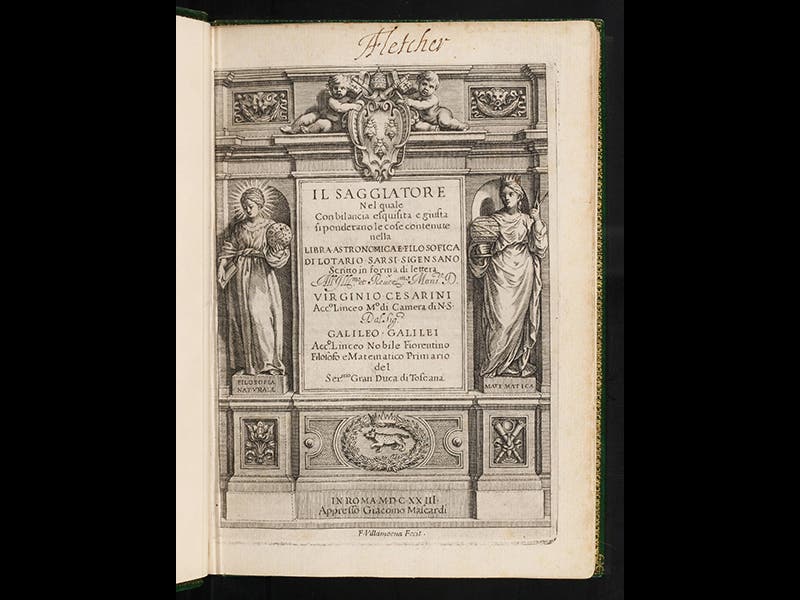Scientist of the Day - Francesco Stelluti
Francesco Stelluti, an Italian naturalist, was born Jan. 12, 1577. Stelluti was one of the founding members of the Accademia dei Lincei, or Academy of the Lyxes, organized in Rome by the nobleman Federico Cesi in 1603. This is often considered the world's first scientific society. Its most famous member, Galileo, was invited to join in 1610, after his success with the telescope. Galileo was honored to be included, and thereafter he always identified himself as “Galileo Galilei, Lincean,” and the Academy's emblematic lynx can be seen on the title page of his Saggiatore (Assayer) of 1623 (fourth image above).
Stellutti was one of the first to use a microscope to study nature (the instrument was invented by Galileo in the 1610s). In 1625, he published a broadsheet that depicted three bees, as seen through a microscope (by no coincidence, three bees made up the family crest of the new Pope, Urban VIII). The Library does not have the broadsheet, which is very scarce, but we do have Stelluti's edition of the Satires of the Roman poet Persius Flaccus (1630), where one can find, unexpectedly, a reduced version of the engraving of the microscopically-viewed three bees (first image above). This marks the first depiction in a printed book of an object as seen through the microscope. A little bit further in the book, one encounters, just as unexpectedly, a magnified weevil (second image above).
The engraved title page of Stelluti’s book (third image above) lists the author as "Francesco Stelluti, Acad. Linceo". There is a lynx at the bottom, and at the top is the crest of his patron, Cardinal Barberini, brother of Pope Urban VIII, with its trinity of bees. The two title pages, both engraved for the same publisher, make a handsome pair.
Dr. William B. Ashworth, Jr., Consultant for the History of Science, Linda Hall Library and Associate Professor, Department of History, University of Missouri-Kansas City










